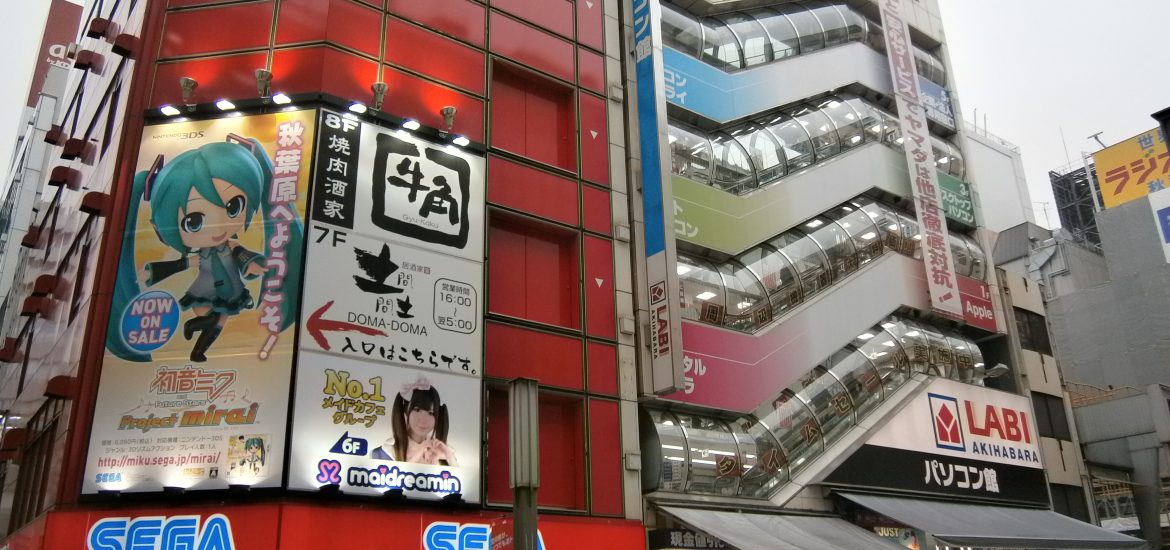The The Japanese arcade center is one of the top places to visit if a person likes gaming and the games are plentiful while accommodating a wide variety of playstyles. While their popularity has waned a bit, mainly due to more competition, the typical Japanese arcade center is still seen as a social and fun destination with plenty of traffic.
One of the reasons why arcades still get plenty of traffic actually stems from the Japanese railway system and is something I should have talked about in my previous article on it. The train station is so central and essential to the Japanese lifestyle that a town or city’s prosperity directly relies on whether it has a train station or not. The typical Japanese person walks or rides a bike to the train station, hops on the train, exits at the closest station to their destination and then walks/rides to where they need to go. While there are still plenty of cars in Japan, the ratio of walking or riding a bike to your destination is much higher than almost anywhere else in the world. Because of this, the train stations are surrounded by business’s looking to cash in on that foot traffic, a business’s like an arcade for example. It’s is very easy on your way back from school, work or even that senior out for a walk to just hop in and play a few games while socializing. Here is a peak at Akihabara’s arcades:
The Crane Game
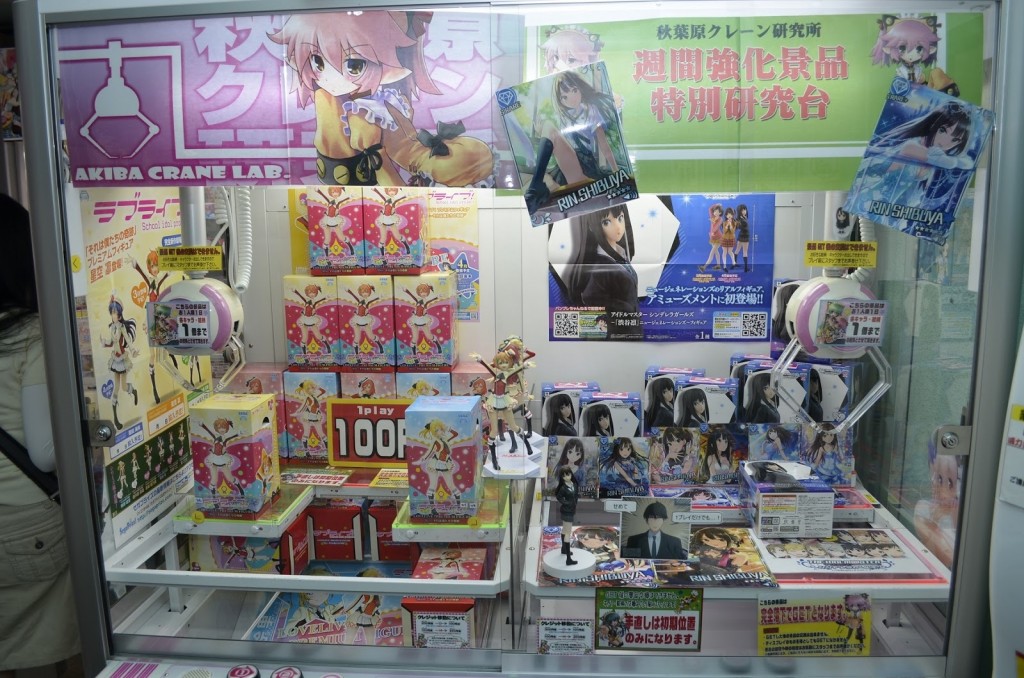 The very first thing you are going to see in a Japanese arcade is the first floor entrances being crammed with crane games. We are not talking about your garden variety 3 pronged claw types either, though there is plenty of that type. Japan has come up with all sorts of variations; the 2 pronged hook, crane push, pole pusher, paper cutter and even one where you pilot a robot to catch the prize. The prizes are not the usual cheap knick-knacks like in US machines, though again you can find crane games that have that, and instead you will find rare prizes that can only be gotten from those crane games.
The very first thing you are going to see in a Japanese arcade is the first floor entrances being crammed with crane games. We are not talking about your garden variety 3 pronged claw types either, though there is plenty of that type. Japan has come up with all sorts of variations; the 2 pronged hook, crane push, pole pusher, paper cutter and even one where you pilot a robot to catch the prize. The prizes are not the usual cheap knick-knacks like in US machines, though again you can find crane games that have that, and instead you will find rare prizes that can only be gotten from those crane games.
Medal Games
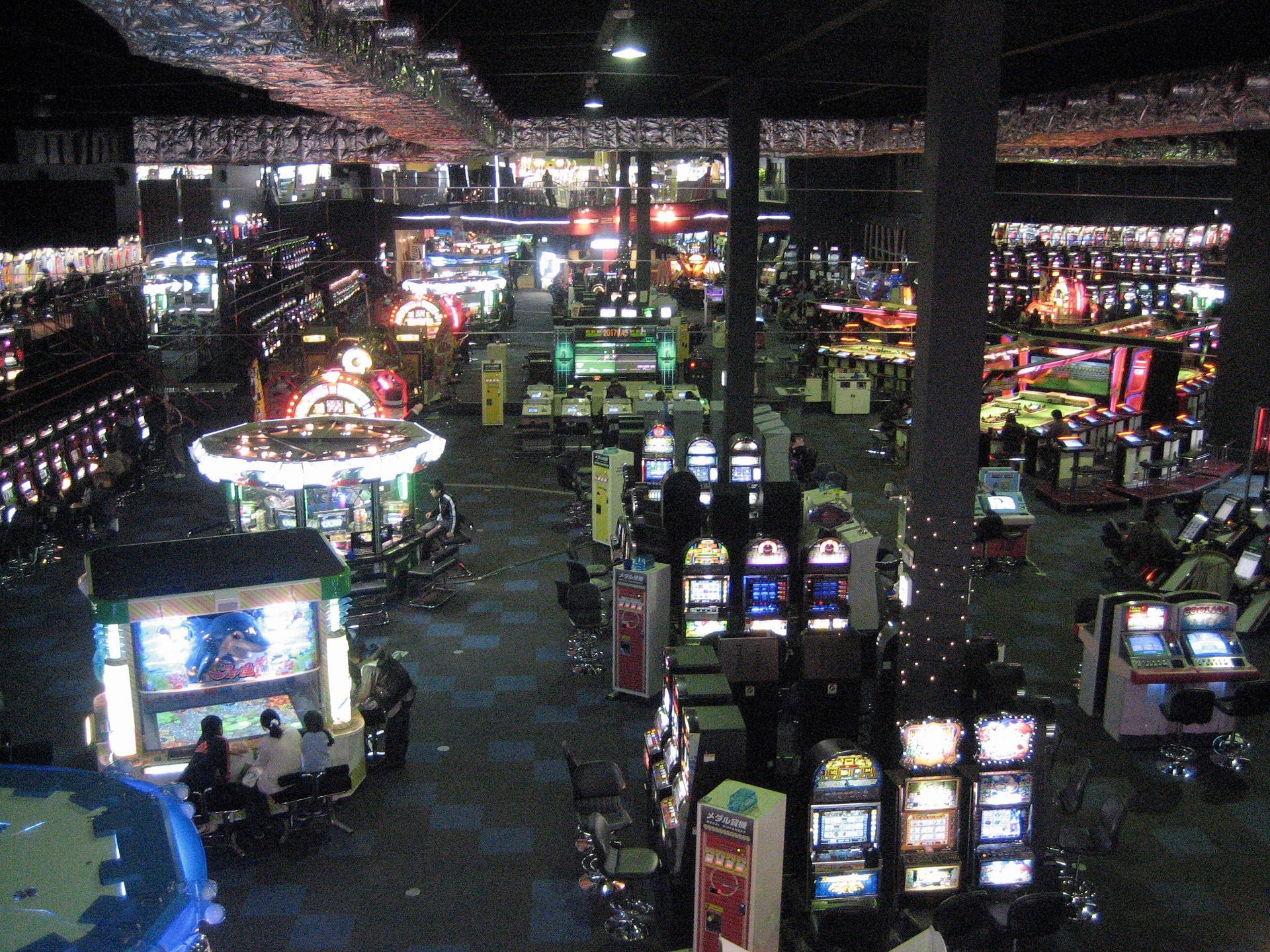 Medal games are the arcade token/coin pusher-type game. The basic game type made it over into the US arcade centers as the coin bulldozer. You time the bulldozer’s push, aim and drop the token and hopefully the token lands in a spot where it can push the other tokens off the edge and you would then get tickets depending on how many were pushed off the edge. The reason why they are called medal games in Japan is because they added a bunch of different archetypes to it. Medal games became more adult oriented and branched out into poker, video horse racing, slot machines, timing and even RPG’s. It’s almost like it’s a Las Vegas Casino, except it doesn’t use cash.
Medal games are the arcade token/coin pusher-type game. The basic game type made it over into the US arcade centers as the coin bulldozer. You time the bulldozer’s push, aim and drop the token and hopefully the token lands in a spot where it can push the other tokens off the edge and you would then get tickets depending on how many were pushed off the edge. The reason why they are called medal games in Japan is because they added a bunch of different archetypes to it. Medal games became more adult oriented and branched out into poker, video horse racing, slot machines, timing and even RPG’s. It’s almost like it’s a Las Vegas Casino, except it doesn’t use cash.
Fighting/Racing/Traditional Games
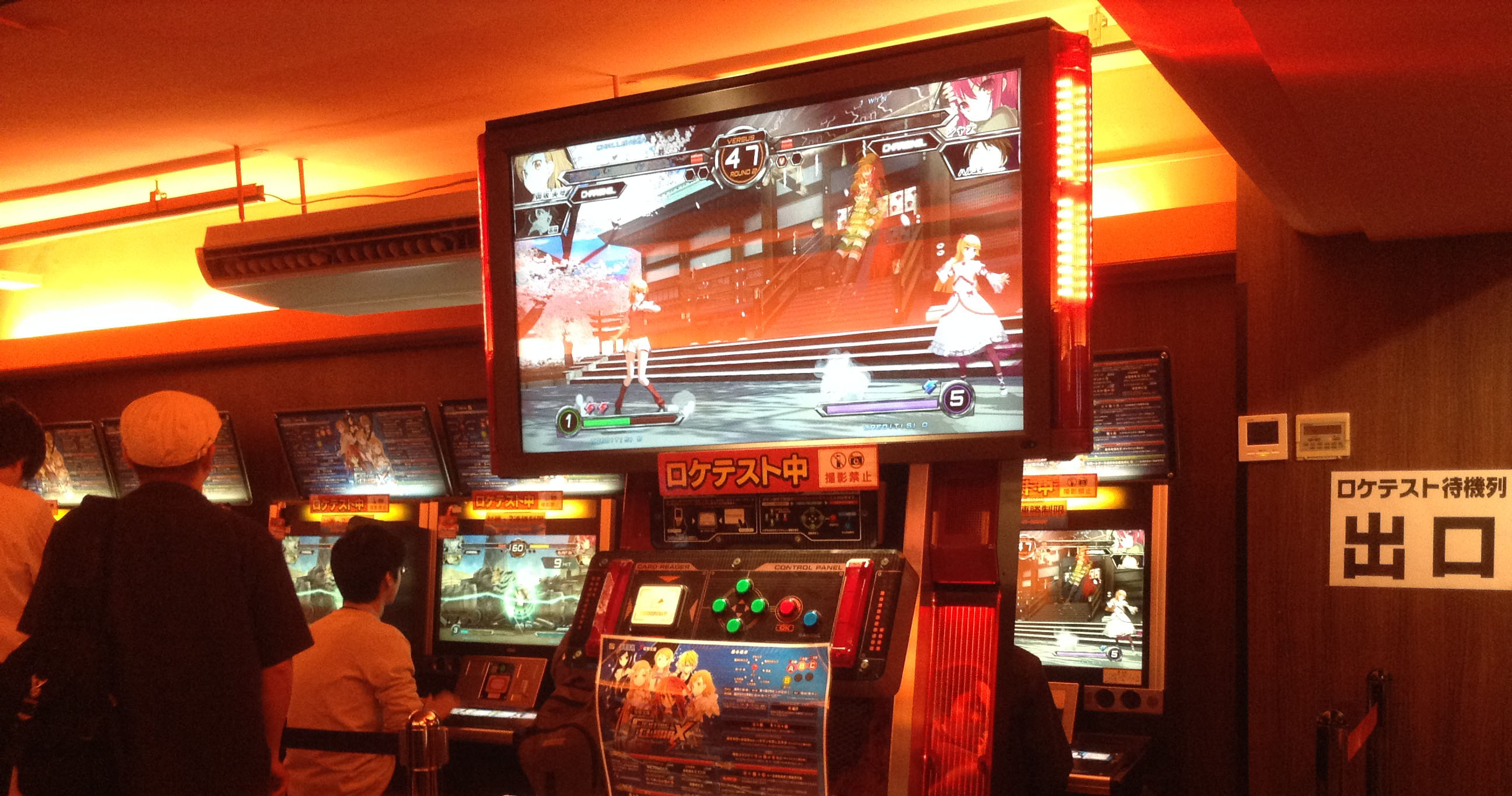 The typical arcade center has a first floor composed of crane games, 2nd-floor of ‘beginner games’ that cater to a wide variety of fans, 3rd-floor is the adult type games, 4th-floor shooter/fighting, 5th floor CTG games. On the 2nd-floor, they have light gun games like Time Crisis, Razing Storm, Dark Escape 3-D, Luigi’s Manson Arcade and racing games like Midnight Maximum Tune, Mario Kart or Initial D. Just remember to use your arcade save card to keep your upgrade’s though.
The typical arcade center has a first floor composed of crane games, 2nd-floor of ‘beginner games’ that cater to a wide variety of fans, 3rd-floor is the adult type games, 4th-floor shooter/fighting, 5th floor CTG games. On the 2nd-floor, they have light gun games like Time Crisis, Razing Storm, Dark Escape 3-D, Luigi’s Manson Arcade and racing games like Midnight Maximum Tune, Mario Kart or Initial D. Just remember to use your arcade save card to keep your upgrade’s though.
Fighting games are still the bread and butter of an arcade and no arcade overview should be without a mention. Most of the Japanese arcade centers have almost every fighting game released in the last 20 years and a lot of them will never see the light of day in the US. Melty Blood, Street Fighter, Tekken, Soul Caliber are just the tip of the iceberg. As an example, Gundam fighting games are popular in Japan and will never be seen in the US. Don’t forget that a lot of the newer released fighting games are networked across Japan and you can battle each other to top the rankings.
The traditional games like Air Hockey and Basketball are also in the arcade, along with a nice variety of SMUPS.
Rhythm Games
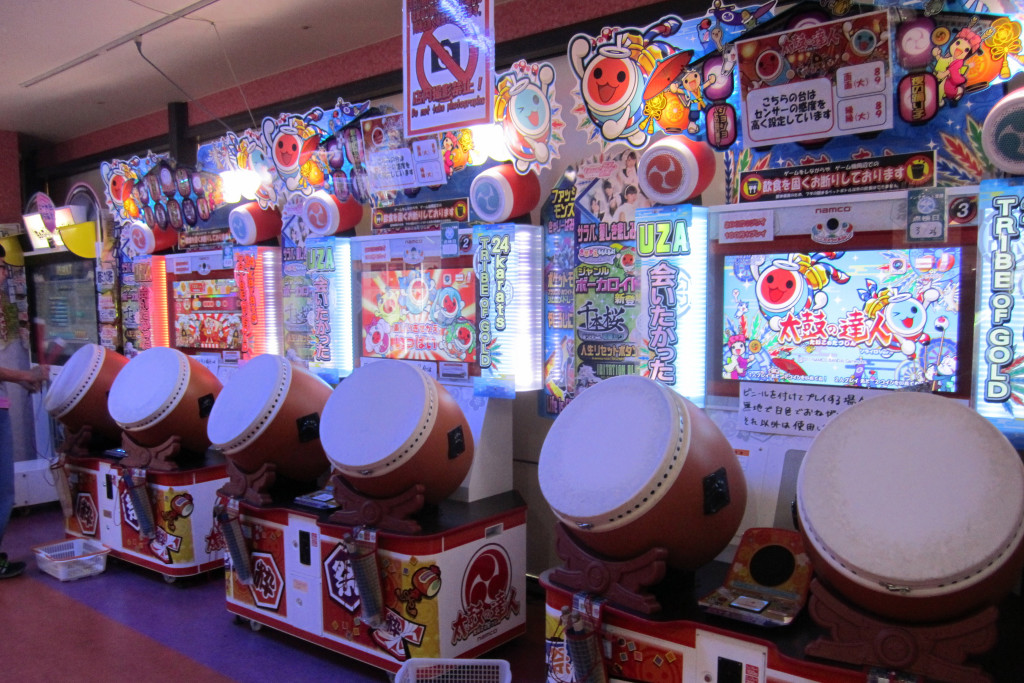 Most of the rhythm games that you have heard of came from the Japanese arcade centers or were inspired by them. Games like Dance Dance Revolution, Gitadora: Guitar Freaks which inspired Guitar Hero series, Beatmania the predecessor to all modern rhythm games, etc. There are unique and great games that can only be played in Japan, Taito Drums is much more satisfying to play with a giant drum.
Most of the rhythm games that you have heard of came from the Japanese arcade centers or were inspired by them. Games like Dance Dance Revolution, Gitadora: Guitar Freaks which inspired Guitar Hero series, Beatmania the predecessor to all modern rhythm games, etc. There are unique and great games that can only be played in Japan, Taito Drums is much more satisfying to play with a giant drum.
Here are some kids having a good time with MaiMai.
Collectible Card Games aka CCG
When I found out about these arcade games my ‘gotta collect em all’ soul started burning. The basics for these games is:
- Go to arcade counter/main units and buy a starter deck. It will come with a save card for the system and a basic set of cards for the game. Tip: Considering buying plastic card protectors, the cards for these games can be very valuable. The average Lords of Vermillion card is worth $6 and it even has some cards valued at over $300.
- Insert the save card for the system into the arcade cabinet, create your save file and then go through the tutorial. When the tutorial is over with it will ask you to insert coins and you can then play a game.
- Win or lose a game the cabinet will give you a new card. You can also choose not to play and instead buy a card from the cabinet directly.
Some of the CCG games are a little strange, who the hell thought up a game where you dress up idols to help them pass auditions and the cards are pieces of the outfit? Some of the other games are Japanese specific, like Japanese pro baseball players or even pro soccer players. Still others are actually more for the young children than adults, like Dragonball Hero’s. 2 games really stand out in this category for me with a 3rd I am keeping an eye on:
- The venerable Sangokushi Taisen series which is the CCG equivalent of Dynasty Warriors but with a much more RTS flair.
- Lords of Vermillion a Square-Enix strategy game with a lot of cross-over characters from animes and Square-Enix games.
- Code of Joker is a new game and I am not sure if it’s a CCG game but all the English info I can find says that it is a CCG game. The videos I have seen makes it look intriguing.
Unique Games
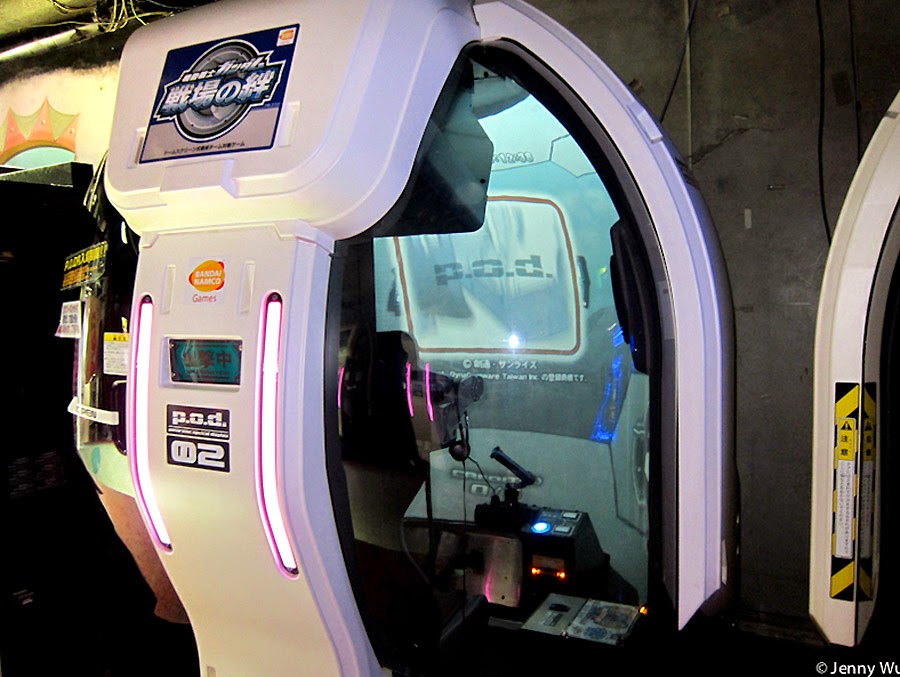
It’s about time for me to wrap up this monstrously large article on Japanese arcade games. Games like Super Table Flip! deserve a mention:
How about Gunslinger Stratos, the game that inspired an anime series.
Wonderland Wars, an 4 vs 4 a Touchscreen with stylus MOBA game.
Then there is the crazy and over the top Gundam Pod game where you actually enter a Gundam cockpit and battle it out with other contestants over the internet.
How about Quiz Magic Academy? An RPG game where you power up you characters through quizzes.
Next time on the Internet Otaku, Tokyo Destination #2, Shibuya and Harajuku.
